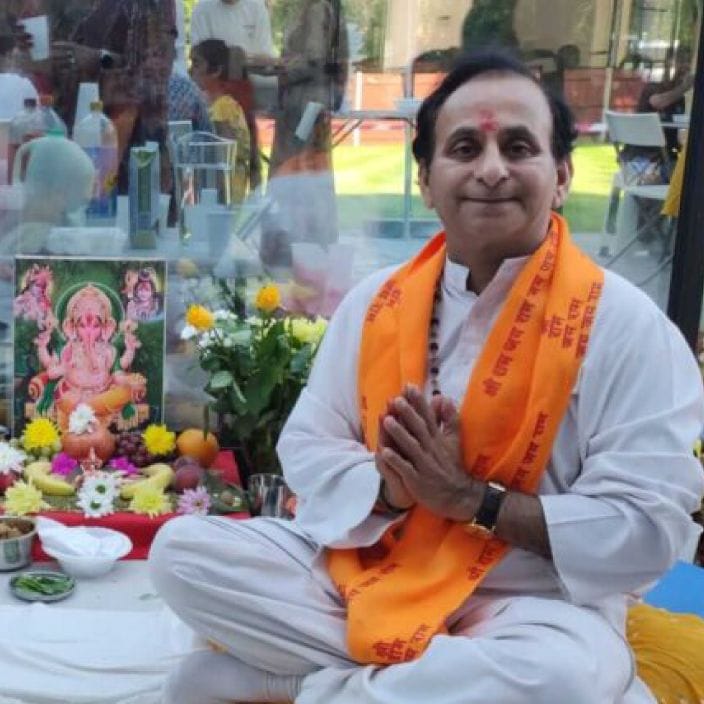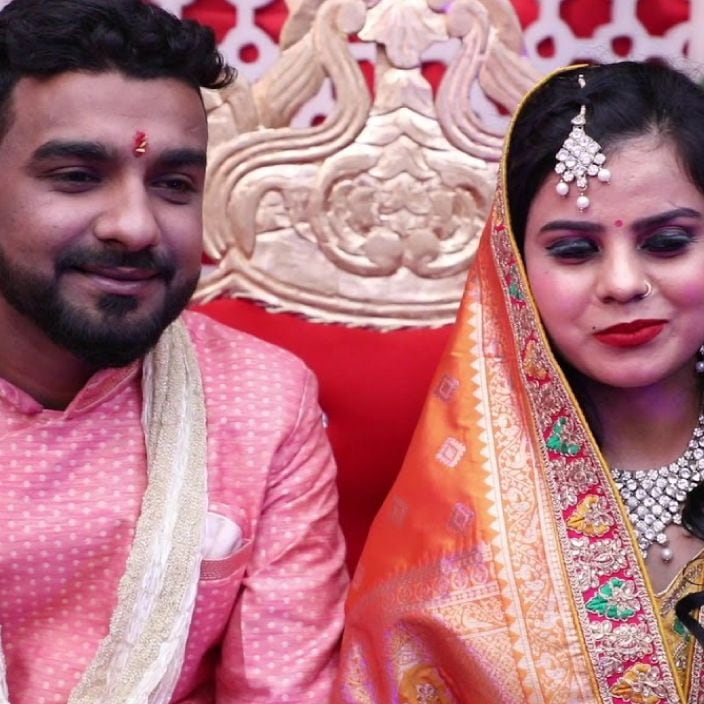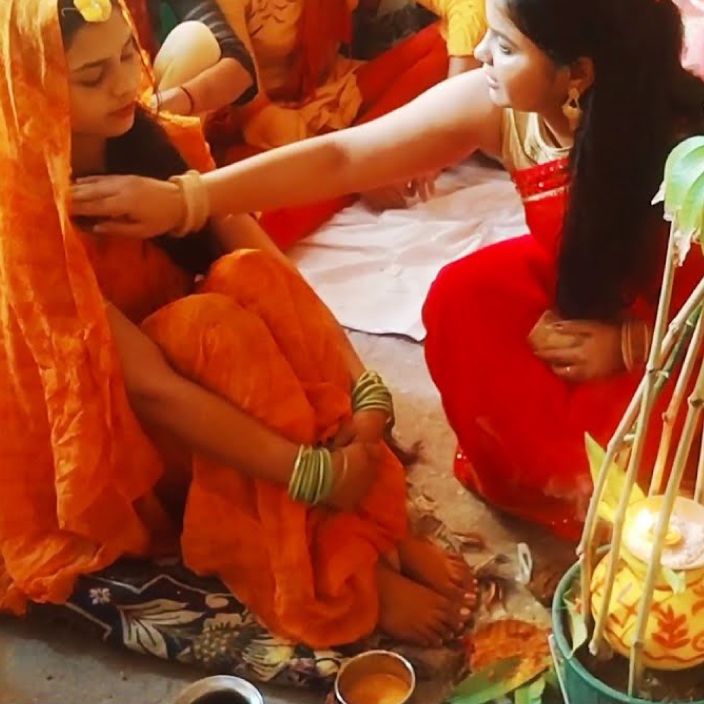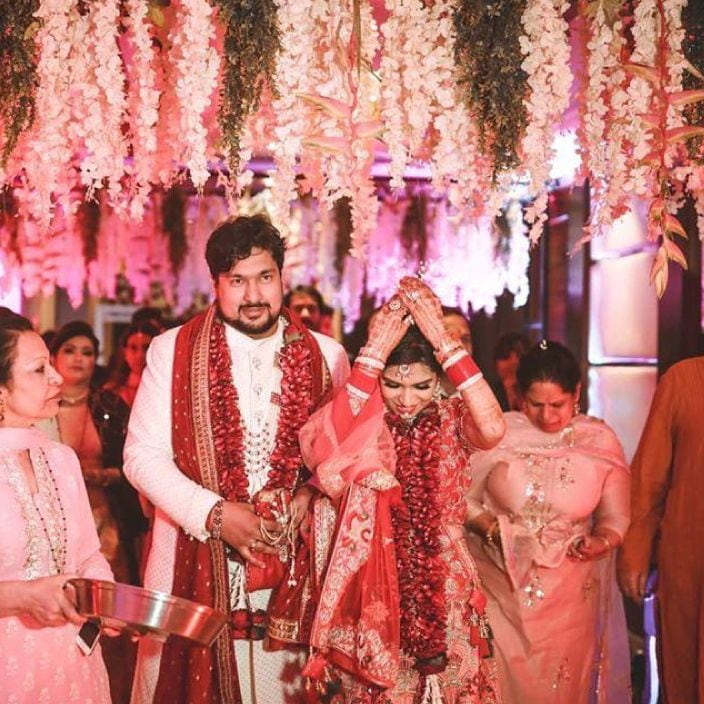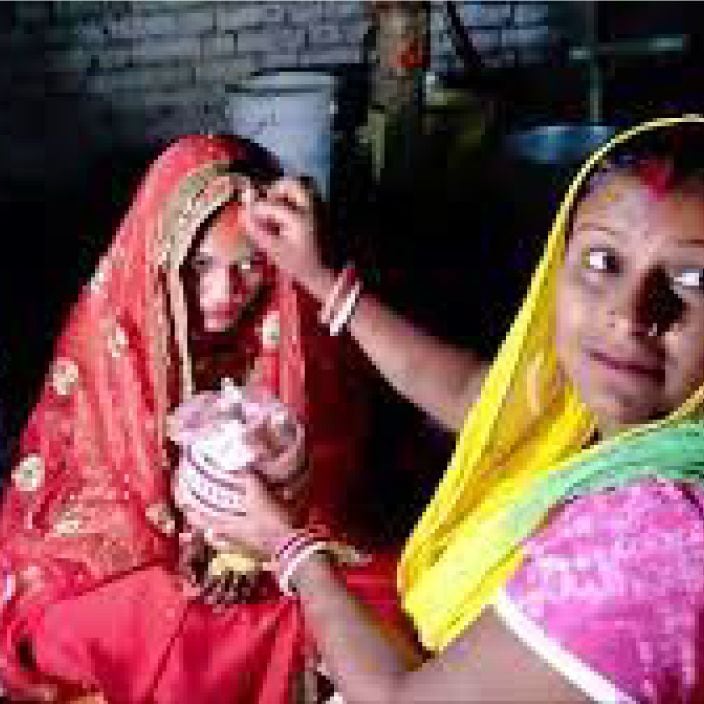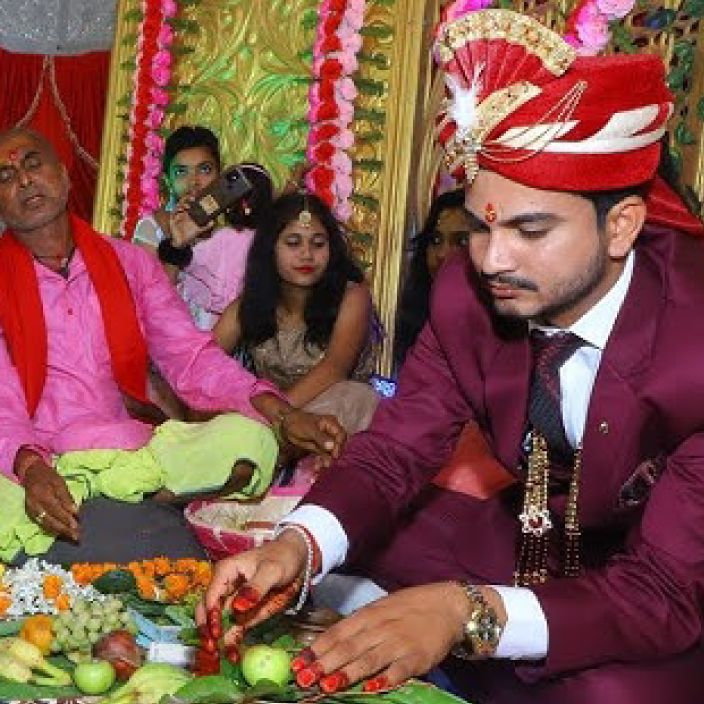For best prices and early deliveries, WhatsApp us at. 918488070070
Bihar and Jharkhand
Indian weddings are colourful and vibrant and all about celebrating culture. In the states of Bihar and Jharkhand, weddings are joyous occasions where the bride and groom's families, friends, and guests participate in several ceremonies in the true spirit of an Indian wedding. Traditionally, a typical wedding celebration lasted a month, with the entire village coming together to celebrate the union of the bride and groom. Today, while wedding celebrations in Bihar and Jharkhand (earlier a part of the larger state of Bihar) may have come down to four to five days, there is a plethora of deep-rooted pre-wedding, wedding, and post-wedding ceremonies that indicate the rich culture and heritage of these two eastern states of India. The grandeur of a wedding in these states encompasses pre-wedding rituals like Satya Narayan Katha,, Cheka, Mandappachadan, Haldi,Tilak, Dhritdhaari and Matripooja, Silpoha and Imli Ghutai; wedding rituals like Baraat Prasthaan, Bhaisur Nirakshan, Kuldevta Puja, Jaimala and Galsedi, Kanyadaan, Phere, Sindoor Daan; and post-wedding rituals like Kohwar Parikshan, Salami, Vidai and Grihpravesh, Swagataarti, Mooh Dikhai, Chauthari, Chauka Chulai Ritual. Weddings in Bihar and Jharkhand serve as a vital link between the past and the future. They embody familial and community unity, hold religious significance, and preserve the region's cultural heritage and social values.
Tracing the Traditions
Weddings are more than just the union of two individuals as they represent age-old beliefs and values. In ancient India, the couple took wedding wows around a sacred fire. This traditional ceremony called Satapadi or saat phere, dating back to the Vedic Age between 1500 BC and 600 BC, is continued to date. Also, the Kalash (a pot filled with water and topped with coconut) and the Mandap (the canopy or sacred space under which the couple is married) are rooted in Vedic traditions. These customs and traditions continue to play an integral part in every Bihar and Jharkhand wedding.
From ancient India to Medieval India, as caste-based communities formed, each caste and sub-caste in Bihar began to follow its unique rituals. For instance, in the Mithila region, known for Madhubani art, wedding decorations include large Madhubani paintings depicting wedding scenes and mythology. They additionally have a Panigrahan and Kosagaaman wedding and post-wedding ritual. Similarly, in the Magadh region, famous for its Sujani embroidery, brides wear sarees adorned with this intricate embroidery work and a couple of red and white chudas (bangles). Though other areas like Bhojpur, Chotanagpur, Angika, and Santhal Pargana also mark the wedding ceremony with diverse traditions, they are all rich in ancient Vedic roots.
The Medieval period, followed by the Mughal rule in India, also gave birth to customs like the exchange of gifts between the bride and groom’s families and the infamous dowry system. It was only in the Colonial period that the British banned dowry and child marriages while other age-old ceremonies and rituals continued.
Furthermore, ancient Bihar and newly formed Jharkhand, which are home to tribal and indigenous communities, are known for their diverse wedding traditions filled with song and dance. Traditional folk songs, such as Sohar and Sangeet, are sung during different rituals, while Jhumar and Jat-Jatin dances form an essential part of the celebrations. While the wedding rituals are mostly similar, each region has unique customs reflecting the local fabric embodying its traditions, religious beliefs, and social values.
Wedding Attire
The Biyahuti Vastra typically denotes the wedding garments worn by the bride and groom. The bride wears a yellow Bhagalpuri silk saree, famously known as the Tussar silk saree, or a Banarasi saree. Sometimes, it is a yellow saree with a red border showcasing the colours of hald? and kumkum, considered auspicious in Vedic rituals. The saree is often adorned with intricate gold embroidery. Some brides also prefer wearing a lehenga for a modern touch. Few tribes of Jharkhand even wear Kuchai silk sarees made from cocoons grown on Arjun and Sal trees in the Kharsawan-Kuchai and Serakela areas.
The bride dresses in finery from head to toe on her wedding day. She wears a traditional Mauri, a headgear customarily crafted from mango or date leaves, or a modern-day Mauri crafted from fancy papers and mirrors. She also covers her head with a veil called the chunari or dupatta, indicating modesty.
The bride even wears traditional jewellery, including necklaces like the choker, chandrahaar, panchlari, satlari or Sita haar, chudhas (bangles), nath (nose ring), and bichhiya (toe rings).
On the other hand, the groom's attire consists of a traditional dhoti and kurta which is mostly in a shade of yellow. However, with changing times modern-day grooms prefer to wear a kurta pajamas, a designer sherwani or a bandhgala made of rich fabrics like velvet or brocade. Even the embellishments are more ornate and made of gold threads and Swarovski crystals. To complete the royal look and complement with the bride’s dress, the groom wears a pagri (turban), a stole or shawl, a pearl sehra (head garland) and juttis with thread work.
Traditional Cuisine
Traditional cuisine from Bihar and Jharkhand includes Angika cuisine, Bhojpuri cuisine, Magahi cuisine and Maithil or Mithila cuisine. These cuisines use local produce like root vegetables and lentils and ingredients like mustard oil, cumin, and turmeric. While indulging in a wedding meal, the main emphasis is on sweets, and one can enjoy a variety of vegetarian and non-vegetarian dishes. At a traditional Bihar and Jharkhand wedding, the highlight is Litti Chokha (stuffed and baked whole wheat dough balls served with a veggie mash of eggplant and potato).
Traditional Dal Pithi (rice flour dumplings in lentils) served with mango or coriander chutney are also a part of wedding menus. Furthermore, rich meat-based or non-vegetarian dishes like kebabs, boti, chicken masala are enjoyed with rice, pulao, biryani and sattu parathas at weddings in Bihar and Jharkhand. Lastly, no wedding banquet is complete without sweets like rasgulla, jalebi, barfis, and unique sweets like thekua and khaja. Beverages like chaas and sharbat are also included.
Cultural Decor
The decor at weddings in Bihar and Jharkhand combines local art forms with modern aesthetics. Cultural symbolism depicted by Mithila art or Madhubani paintings continues to find a place in traditional themes. Today, while Bollywood has influenced elaborate wedding décor styles, traditional key aspects continue to pop in décor. For instance, red, maroon, yellow, gold, and green are used in drapes and floral arrangements to symbolise prosperity and marital bliss.
Sometimes, silk sarees with traditional motifs form the backdrop of the Vedic four-pillar mandap. Also, marigolds or mango leaf garlands adorn the mandap, the entry gate and the backdrop, as they are associated with good luck, purity, and devotion. In addition, in many Bihar and Jharkhand weddings, the entrance and pathways are decorated with Aripana or Alpana, which are intricate rangoli patterns made using rice paste. You can also find copper containers with floating lotus and earthen or brass diyas as decorative elements at the weddings.
